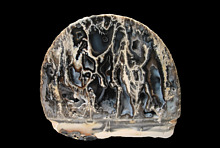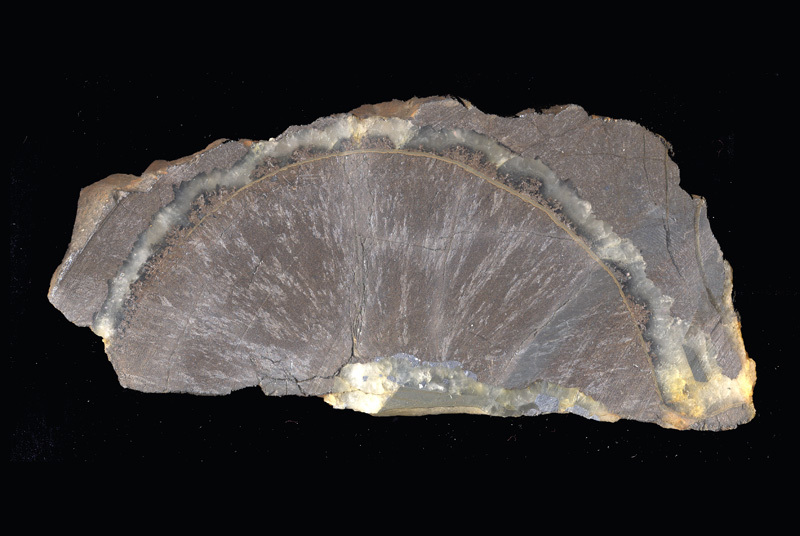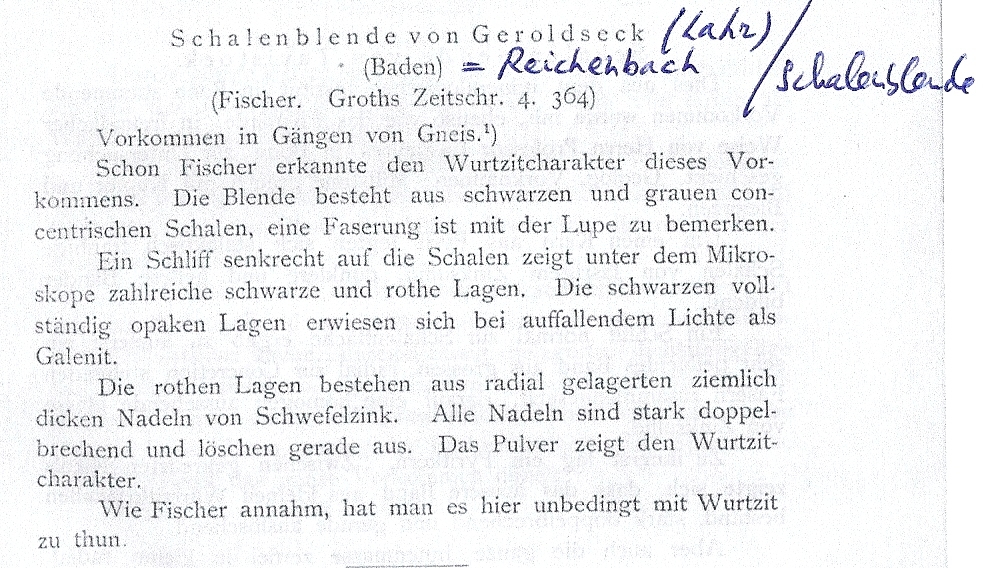Home PageAbout MindatThe Mindat ManualHistory of MindatCopyright StatusWho We AreContact UsAdvertise on Mindat
Donate to MindatCorporate SponsorshipSponsor a PageSponsored PagesMindat AdvertisersAdvertise on Mindat
Learning CenterWhat is a mineral?The most common minerals on earthInformation for EducatorsMindat ArticlesThe ElementsThe Rock H. Currier Digital LibraryGeologic Time
Minerals by PropertiesMinerals by ChemistryAdvanced Locality SearchRandom MineralRandom LocalitySearch by minIDLocalities Near MeSearch ArticlesSearch GlossaryMore Search Options
The Mindat ManualAdd a New PhotoRate PhotosLocality Edit ReportCoordinate Completion ReportAdd Glossary Item
Mining CompaniesStatisticsUsersMineral MuseumsClubs & OrganizationsMineral Shows & EventsThe Mindat DirectoryDevice SettingsThe Mineral Quiz
Photo SearchPhoto GalleriesSearch by ColorNew Photos TodayNew Photos YesterdayMembers' Photo GalleriesPast Photo of the Day GalleryPhotography
╳Discussions
💬 Home🔎 Search📅 LatestGroups
EducationOpen discussion area.Fakes & FraudsOpen discussion area.Field CollectingOpen discussion area.FossilsOpen discussion area.Gems and GemologyOpen discussion area.GeneralOpen discussion area.How to ContributeOpen discussion area.Identity HelpOpen discussion area.Improving Mindat.orgOpen discussion area.LocalitiesOpen discussion area.Lost and Stolen SpecimensOpen discussion area.MarketplaceOpen discussion area.MeteoritesOpen discussion area.Mindat ProductsOpen discussion area.Mineral ExchangesOpen discussion area.Mineral PhotographyOpen discussion area.Mineral ShowsOpen discussion area.Mineralogical ClassificationOpen discussion area.Mineralogy CourseOpen discussion area.MineralsOpen discussion area.Minerals and MuseumsOpen discussion area.PhotosOpen discussion area.Techniques for CollectorsOpen discussion area.The Rock H. Currier Digital LibraryOpen discussion area.UV MineralsOpen discussion area.Recent Images in Discussions
Generalschalenblende

15th Dec 2017 21:11 UTCMichel Blondieau
"Schalenblende" is an Zn ore colloform variety known as to contain sphalerite and wurtzite. In the area of Moresnet (Belgium), the mixture of these two species is only accreedited by a really old paper (Noelting, 1887). But no recent paper seems to prove that ! I have analysed by RX diffraction specimens of "schalenblende" from Lontzen (Rabotrath and Erlenbach), a locality just near Moresnet, in Belgium, and no wurtzit was found; only sphalerit ! I suspect that all these "schalenblende" from Belgium don't contain wurtzite at all. But I am perhaps wrong and I would be glad to know if scientific paper have been written on that. Are there any localities worldwide with "schalenblendes" known to show mixtures of sphalerit and wurtzit ? If so, is it really sure ? If necessary, I can do some DRX analyses on some specimens and write a paper about that. Material needed has to be pure but quantity needed is under 1 cm³.
Thank you for all your answers and help.
Michel Blondieau,
Belgium
15th Dec 2017 21:36 UTCHarjo Neutkens Manager
The information I have about the schalenblende specimens from Rohdenhaus, Wülfrath, Germany is that they only contain sphalerite, no wurtzite.
Amicalement,
Harjo

15th Dec 2017 23:23 UTCRichard Gunter Expert

16th Dec 2017 11:48 UTCMichel Blondieau
Harjo, I have a lot of schalenblendes from Seilles and I'll do some analyses on them. In your nice mindat page on schalenblende, I read that schalenblende from Poland are usually a mixture of sphalerite and wurtzite. Any paper on that ?
Richard, Thank your for that information. Next week, I'll get that paper. It seems that a lot of new analyses on such material show only sphalerite with no wurtzite. It's what I think too for probably all schalenblende worldwide ! But I'll do analyses ...
Thank again,
Michel
16th Dec 2017 12:40 UTCPaul De Bondt Manager

16th Dec 2017 12:52 UTCAlfredo Petrov Manager

16th Dec 2017 13:01 UTCErik Vercammen Expert

16th Dec 2017 13:30 UTCMichel Blondieau
Harjo, do you have a paper for the schalenblende from Wülfrath ?
Paul, I ask the same for the schalenblende from Wiesloch.
Alfredo, it's curious but I have found something about that :
https://pubs.geoscienceworld.org/segweb/economicgeology/article-abstract/87/1/113/20973/mineralogy-paragenesis-and-mineral-zoning-of-the?redirectedFrom=PDF
Erik, I think it's known as layers of sphalerite and layers of wurtzite...
Thanks,
Michel
16th Dec 2017 13:41 UTCPaul De Bondt Manager
There is a Lapis number on the subject. Can bring it to Hannut next year.

16th Dec 2017 13:55 UTCAlfredo Petrov Manager
I think schalenblende should be defined as its name suggests: "schalen" for the shape, and "blende" for the dominant constituent (sphalerite). What else is in it as subsidiary constituents (wurtzite, marcasite, galena...) is going to vary from locality to locality.
16th Dec 2017 14:51 UTCReiner Mielke Expert

16th Dec 2017 15:22 UTCMichel Blondieau
Reiner, I agree with that but the problem I'd like to solve is that one said there are sphalerite and wurtzite in the schalenblende from Moresnet (Belgium) and I don't think so. And to give an answer, I would like to know if there are really worldwide specimens of schalenblende with wurtzite as it's often said.
Thanks,
Michel

16th Dec 2017 15:55 UTCDonald B Peck Expert
16th Dec 2017 17:19 UTCChristof Schäfer Manager
Ramdohr (Die Erzmineralien und ihre Verwachsungen, 1960) mentions Wurtzite in Schalenblende from Diepenlinchen, Eschbroich, Altenberg, Schmalgraf. Sphalerite replacing Wurtzite is common, wurtzite seems to be rare.
Ramdohr refers to Ehrenberg H. (1931): Der Aufbau der Schalenblende der Aachener Blei-Zink-Lagerstätten……., Neues Jahrbuch Mineralogie, Beilagen Band 64A, pp 397-422

16th Dec 2017 17:53 UTCMichel Blondieau
Thanks for that information. Wurtzite seems to be very often converted into sphalerite ! Alfredo already mentionned it .
Christof,
I have specimens from Eschbroich and Schmalgraf and I will do analyses on them. If they only contain sphalerite, it will be difficult to prove that wurtzite has been converted to sphalerite; these schalenblende are colloform ores and don't show any crystals habits ... What were the analyses done by Ehrenberg and others to mention wurtzite in schalenblende ?
Thanks for all your helpfull replies,
Michel
17th Dec 2017 15:55 UTCChristof Schäfer Manager
Ramdohr uses optical properties in reflected light for identification and in some cases XRD.
If I understand right he first looked for layers in the Schalenblende that consist of prismatic crystals that have no twinning lamellae (all sphalerite has twinning lamellae). And later in a second step part of such a sample was charakterised with XRD.

17th Dec 2017 16:36 UTCMichel Blondieau
Thank you for these informations. First, I will do some researchs in the existing publications and then see how to work.
Do you have Ramdohr's paper ? I am not sure to find it easily here in Belgium but I will do a quick search in the laboratory at the end of next week.
Thanks again,
Michel

17th Dec 2017 17:22 UTCJohn Mason Expert
17th Dec 2017 18:47 UTCHarjo Neutkens Manager
I don't have access to a paper on the Rohdenhaus schalenblende, but I'll try to contact the mineralogist who did most of the work for the Mineralienwelt articles about Rohdenhaus.
No information about the Polish ones either. Maybe Tomas from Spirifer has info about them, I'll ask him.
I'll send you a private message because I have a question for you too ;-)
Cheers,
Harjo

17th Dec 2017 21:24 UTCMichel Blondieau
thank you for your post. If you think the specimens from Central Wales could be sphalerite and wurtzite, I am really interested to examine one of them. Thank you for your proposal. With a small sample (really small !) I'd like to obtain too a picture of the specimen and see how the different layers are. For your advice, are there any analyses done on the schalenblendes from that locality or area ?
Salut Harjo,
I surely would be pleased to know much more about the Rohdenhaus schalenblendes and about the polish ones too.
Thanks to all,
Michel

18th Dec 2017 09:28 UTCJohn Mason Expert
The later-stage mineralisation is relatively uninvestigated. Most of it is found E and SE of Aberystwyth (south of my postgrad research area). If you can message me contact details I'll send you a small piece.

18th Dec 2017 09:48 UTCMichel Blondieau
Thank you for your proposal.
You can send the specimen at the laboratory at the following address :
BLONDIEAU MICHEL
Laboratoire de Minéralogie, B18
Université de Liège
Allée du 6 août, Sart-Tilman
B-4000 Liège
BELGIUM
Really thanks to help me.
I'll give you results of the analyses.
Michel

18th Dec 2017 10:33 UTCJohn Mason Expert

18th Dec 2017 10:40 UTCJohn Mason Expert
"The presence of rapidly deposited, colloform ZnS and FeS 2 and bladed galena in the central Fe-Zn zone indicates that ore fluids which deposited the sulfides in the central zone were more saturated with respect to metal sulfides. "
Elsewhere in North Wales, there are occurrences of post-Acadian vein mineralisation that correspond almost exactly to this description. See attached photo. This is a polished block about 25cm in width. I will send you a sample of this stuff too!

18th Dec 2017 10:51 UTCBen Grguric Expert
Allan Pring has done some work on banded material from other localities and found it's quite easy to spot wurtzite layers and areas in thin section, as they are not isotropic. If you see previous work of this type in which they claim clearly anisotropic ZnS is sphalerite you really have to ask how can this be?

18th Dec 2017 10:56 UTCJohn Mason Expert

18th Dec 2017 11:46 UTCMichel Blondieau
Already, I thank you for the specimen you'll send. I'll let you know what I'll find, probably in january.
Ben, thank you for these really helpful informations. I will get your paper of 2006 at the end of this week. Do you know references for the Allan Pring papers you mention ?
Again, thanks to all for these advices.
Michel

18th Dec 2017 11:52 UTCJohn Mason Expert

18th Dec 2017 23:42 UTCRichard Gunter Expert
Wurtzite converts to sphalerite in other settings as well. In the Les Malines District a portion of the sphalerite https://www.mindat.org/photo-553101.html has external morphology that had it previously listed as wurtzite. Further XRD work in the district revealed that no wurtzite exists here.

19th Dec 2017 07:49 UTCMichel Blondieau
Curious platty (hexagonal ?) crystals were indeed known as "wurtzite" at the french Malines mine. In a nice special issue on that mine published in the french "Le Règne Minéral" magazine, it can be read that there is no wurtzite à The Malines mine and all these crystals are only sphalerite. Furthermore, it seems that there was probalby no wurtzite before; their shape are due to problems during their buildings. The link goes to such crystals but not to "schalenblende" that is also known at the Malines. Analyses of "schalenblendes" from the Mallines mine don't show any wurtzite at all.
Thanks for your help.,
Michel
19th Dec 2017 16:34 UTCChristof Schäfer Manager
sent you a copy of the wurtzite chapter

20th Dec 2017 08:09 UTCMichel Blondieau
Michel

12th Jan 2018 11:43 UTCMichel Blondieau
Würtzite doesn't appear in any schalenblendes I already have analysed by DRX method ! I suspect there is no more würtzite at all in such specimens but I have again other specimens to analyse.
Michel
12th Jan 2018 21:43 UTCRalph S Bottrill 🌟 Manager

13th Jan 2018 08:28 UTCMichel Blondieau
Nice to know that ! I have seen your specimen :
https://www.mindat.org/photo-583425.html
but you write that würtzite may perhaps be associated with sphalerite.
Here you say that it has been proved by PXRD. Is there any paper on that ?
Maybe, do you have an extra small specimen ? I'd really like to analyse that !
You can send me a PM.
Thank you
Michel

13th Jan 2018 09:53 UTCLudger Krahn (2)
I think wurtzite is a very rare and only very subordinate component of the schalenblende in Mississippi-Valley-type lead zinc deposits of the region Aachen/Stolberg/East Belgium.

13th Jan 2018 12:13 UTCMichel Blondieau
Thank you for your help. It's a nice information although on the following page.
https://www.mindat.org/mesg-85-134773.html
it can be read :
"The Diepenlinchen mine produced quite a few good mineral specimens. From the main site beautiful Calcite crystals on colloform Schalenblende are noticeable. The most known specimens are beautifully banded Schalenblende samples. The best ones were found at the Henriette shaft site. The primary sulphide paragenesis is dominated by Schalenblende with a variable content of Galena and Marcasite. The pale layers of the Schalenblende only contain Sphalerite, in the dark layers also Wurtzite may be present."
wurtzite MAY (!!!) be present...
As you, I think wurtzite is really rare and perhaps there is none at all !
For the schalenblendes from Belgium, the presence of wurtzite was first mentionned by Noelting in 1887. It's really old and perhaps (surely ?) false !!!.
Thank you for your helpful reply
Michel
15th Jan 2018 20:06 UTCRalph S Bottrill 🌟 Manager

16th Jan 2018 06:47 UTCMichel Blondieau
Thank you for your help. If you can find a small sample, it would be fine ! Only 1 gram of matter is much more than necessary !
Wurtzite in Schalenblende is curious on the genetic scale too. As wurtzite is the stable ZnS over a temperature of about 1000° (depending of the amount of iron...) and Sphalerite is the stable one below. In Belgium, schalenblende ores were deposited at about 100°C ! It's not really the good conditions for wurtzite !!
Thanks to all for the help.
Michel

16th Jan 2018 10:55 UTCBen Grguric Expert
16th Jan 2018 13:03 UTCRalph S Bottrill 🌟 Manager
I’m dubious that all wurtzites formed over 1000C, it’s a bit like saying aragonite is the high pressure polymorph of calcite, but we know it’s forms in seashells and surfical lavas: other chemical and thermodynamic conditions are important too. Ditto for cristobalite and tridymite type silica (high temperature polymorphism) forming in opal near room temperature.
This material probably formed rapidly, at relatively low temperature and some of the zinc sulphide is very poorly crystalline with a mixture of wurtzite and sphalerite polytypes, though sphalerite appeared dominant. We should write it up.

16th Jan 2018 16:16 UTCAlex Homenuke 🌟 Expert

17th Jan 2018 20:01 UTCMichel Blondieau
Michel

17th Jan 2018 20:09 UTCMichel Blondieau
Schalenblendes from Belgium, Germany or Poland are really different than yours and I'll try to get one sample and analyse it.
I already have analysed more than 10 schalenblendes from different localities and wurtzite doesn't appear ! Sometimes, there are really low reflections that could be suited with but it's not sure at all.
Interesting what you say Ralph about aragonite and other silica polymorphs.
Again, thanks to all,
Michel
21st Jan 2018 17:00 UTCPhilip Bluemner Expert
I first learned that schalenblende consists of sphalerite and can contain wurtzite (and other sulphides). But over the years I heard that schalenblende also can be solely wurtzite, like here from Silbereckle.
The person I bought it from said all specimens are wurtzite. According to above knowledge I never had it analyzed.
Best regards
Philip

21st Jan 2018 17:26 UTCMichel Blondieau
Thanks for your reply
I already have seen your nice schalenblendes here on the forum.
As everybody, I heard and read that wurtzite is common in schalenblendes. With XRD method, I want to prove it and it isn't easy at all. If you agree, I can do an analyse on your schalenblende from Reichenbach. It would be interesting to do an analysis as that locality is effectly described to contain wurtzit.
I only need about 1 gram of matter. In fact, I can do with less than that quantity but I have to select carefully what I have to analyse (no galena or others...)
If you accept, you can send me a PM.
Thank you Philip for your help.
Michel

21st Jan 2018 20:27 UTCMichel Blondieau
In the joined picture, it can be read something about the schalenblende from the area of Reichenbach.
Noeling, 1887, in german.
Michel

3rd Feb 2018 12:25 UTCMichel Blondieau
Thank you for the samples you have sent.
I do an XRD analysis on the nice fibrous material from the Clara Mine at Ponterwyd but halas, I only have seen sphalerite and no wurtzite at all !
I have sent you an PM
Wurtzite in schalenblende is really hard to prove !!!
Michel

4th Feb 2018 13:38 UTCMichel Blondieau
Wurtzite seems to be a very rare mineral !
Michel
4th Feb 2018 14:33 UTCPaul De Bondt Manager
There is schalenblende from Pribram too but unfortunately I was never able to obtain a specimen.
So I can't help you but perhaps another member has a specimen for you.... and one for me.
A bientôt a Hannut.
Paul.

4th Feb 2018 16:36 UTCMichel Blondieau
A bientôt à Hannut,
Michel




Mindat.org is an outreach project of the Hudson Institute of Mineralogy, a 501(c)(3) not-for-profit organization.
Copyright © mindat.org and the Hudson Institute of Mineralogy 1993-2024, except where stated. Most political location boundaries are © OpenStreetMap contributors. Mindat.org relies on the contributions of thousands of members and supporters. Founded in 2000 by Jolyon Ralph.
Privacy Policy - Terms & Conditions - Contact Us / DMCA issues - Report a bug/vulnerability Current server date and time: April 25, 2024 04:38:24
Copyright © mindat.org and the Hudson Institute of Mineralogy 1993-2024, except where stated. Most political location boundaries are © OpenStreetMap contributors. Mindat.org relies on the contributions of thousands of members and supporters. Founded in 2000 by Jolyon Ralph.
Privacy Policy - Terms & Conditions - Contact Us / DMCA issues - Report a bug/vulnerability Current server date and time: April 25, 2024 04:38:24















